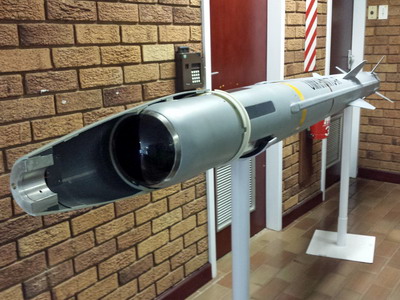T
Turko
Guest
When will Roketsan share dimensions of HISAR missiles? It would be great to know its weight, length, diameter, warhead information. Global SAM producers like MBDA don't hesitate sharing infos.
Latest Thread
When will Roketsan share dimensions of HISAR missiles? It would be great to know its weight, length, diameter, warhead information. Global SAM producers like MBDA don't hesitate sharing infos.
How about low flying supersonic missiles? You can’t expect to hit sea skimming missile that comes in to your radar at 30km and has to be engaged at closer than 10km, with Siper!Upper tier SAM (90-100km Hisar, Siper, S-400) will take care of those targets flying supersonic at high altitude. The targets that a Hisar-O+ will encounter are not high-flying supersonic planes but subsonic fighters, helicopters, UCAV's and PGM's at mostly low and medium altitude.
That is why Turkey is developing a layered ADS each with their own strengths and weaknesses complementing each other.
The Hisar is primarily a land-based system and thus unlikely to deal with (supersonic) sea-skimming missiles in a naval environment. But the hardware is there to do that in theory. TVC and dual pulse for extra hit chance against terminal manouvering targets.How about low flying supersonic missiles?
Perhaps it can but there are short and medium range systems better suited to do that like RAM, ESSM, SA-N-12/HQ-16 and gun barreled CIWS.You can’t expect to hit sea skimming missile that comes in to your radar at 30km and has to be engaged at closer than 10km, with Siper!
Depends on the situation. On land, such a plane would primarily be intercepted/targeted by fighters. A plane flying at supersonic speed will be detected by the LRSAM radar(s) at longer ranges than the range of a LRSAM. A plane at supersonic speeds and low altitude will have its range drastically reduced by the thicker air and if it carries any payload, will also be severely limited in evasive manouvers. If targeted, it will have to drop its payload in order to stand a chance of surviving and will result in mission failure.Also if a supersonic plane is at 30-40km distance, you wouldn’t send a 150km range missile to intercept it.
I would argue that the Hisar-O+ with its IIR seeker is better suited for that job than an active radar guided Hisar. IIR is more difficult to counter than a RF seeker by a plane. And a missile doesn't carry any counter measures at all, so theoretically an IIR and RF seeker will perform the same.If you have only Hisar O+ or RF in your VLS tubes on you ship and have registered a supersonic plane or missile coming towards you, you have to use your Hisar RF.
Pretty sure you're looking at it.Looking forward to seeing a version with R/F seeker.
View attachment 25393

Umkhonto is effectively dead, they couldn't even get a loan from South African banks for a mutli million dollar Egyptian contract for development of the Umkhonto-R.Finally the biggest rival of MİCA VL/ Umkhonto VL has appeared. I hope it will achieve great export success as IIR guided missiles bring Great tactical solution.
Hisar O utilizes a discarding nose cone like Umkhonto.Is this possible for Hisar A?
The Discardable Nose is developed for the Umkhonto Missile to reduce the drag and extend the missile range

Denel Dynamics develops expendable nose cone to increase missile range - defenceWeb
Denel Dynamics interns have developed a nose cone to reduce drag and thus increase the range of the Umkhonto infrared guided missile by more than tenwww.defenceweb.co.za
Denise Wilson, Denel Dynamics deputy chief executive, said that the nose cone has been on the cards for a while and will be incorporated onto future missiles. This should increase range from 25 to 35 kilometres for the Umkhonto EIR.
Could it be implemented on the A in theory?Hisar O utilizes a discarding nose cone like Umkhonto.
Yes. Very likely possible. But not for extending range.Is this possible for Hisar A?
The Discardable Nose is developed for the Umkhonto Missile to reduce the drag and extend the missile range

Denel Dynamics develops expendable nose cone to increase missile range - defenceWeb
Denel Dynamics interns have developed a nose cone to reduce drag and thus increase the range of the Umkhonto infrared guided missile by more than tenwww.defenceweb.co.za
Denise Wilson, Denel Dynamics deputy chief executive, said that the nose cone has been on the cards for a while and will be incorporated onto future missiles. This should increase range from 25 to 35 kilometres for the Umkhonto EIR.
Isn't Hisar-A on the APC chassis smaller and more mobile than the Hisar-O?I don't understand why you want to extend the range of Hisar A, there is already Hisar O for that.
Our new frigates and ships are probably not going to have RAM or ESSM. The new MDAS will most likely have quad packed Hisar RF for AD purposes. If they can produce a 10km range Sungur, then a RAM replacement may be in the running.Perhaps it can but there are short and medium range systems better suited to do that like RAM, ESSM, SA-N-12/HQ-16 and gun barreled CIWS.
Isn't Hisar-A on the APC chassis smaller and more mobile than the Hisar-O?
A hint to you: They use same canister.Isn't Hisar-A on the APC chassis smaller and more mobile than the Hisar-O?
O+ canister is a bit longer and heavier. Hisar O vehicles can use A missiles but Autonomus Hisar A cant use O missiles.A hint to you: They use same canister.
Hope you're right but the brochure pictures in the previous page show it launching with a bare IIR nose.Hisar O utilizes a discarding nose cone like Umkhonto.
Source is ibrahim sünnetçi.Hope you're right but the brochure pictures in the previous page show it launching with a bare IIR nose.
